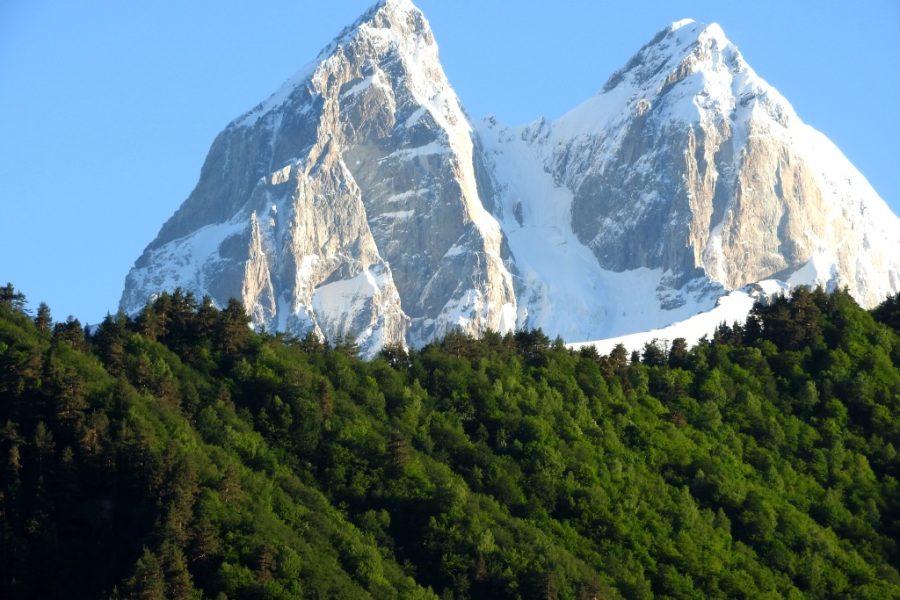The Eastern Prone River: An Artery of Shida Kartli
The Eastern Prone River (მდინარე აღმოსავლეთის ფრონე) is a significant river system in the Shida Kartli region of central Georgia. Originating on the eastern slopes of the Likhi (Surami) Range, which divides eastern and western Georgia, it flows eastward across the fertile Shida Kartli plain before joining the Mtkvari River. It is a vital water source for one of Georgia’s most important agricultural heartlands, irrigating vast fields of grain, vegetables, and the famous fruit orchards of the region. The name “Eastern” distinguishes it from its smaller counterparts, the Western and Middle Prone rivers.
The river flows through a landscape rich in history and archaeology. The Shida Kartli plain has been a cradle of Georgian civilization for millennia, and the areas along the Eastern Prone have been continuously inhabited since the Bronze Age. The river has witnessed the rise and fall of kingdoms and has been central to the life of major historical towns like Kareli. Today, it remains a crucial element of the region’s economy and a defining feature of its flat, expansive landscape, set against the backdrop of the distant Caucasus mountains.
ℹ️ General Information
- Name of River: Eastern Prone River (მდინარე აღმოსავლეთის ფრონე)
- Location: Shida Kartli Region (Kareli and Khashuri municipalities), Georgia.
- Length: 105 km (65 miles)
- Basin Size: 1,150 km² (444 sq mi)
- Source (Origin): Eastern slope of the Likhi Range.
- Mouth (Where it flows): Left tributary of the Mtkvari River.
- Main Tributaries: Tseratiskhevi, Gholoukhiskhevi.
📍 Geography & Course
The Eastern Prone begins in the low mountains of the Likhi Range and quickly descends to the Shida Kartli plain. Here, its character changes from a mountain stream to a slow-moving lowland river. Its course is meandering, and its waters are heavily diverted into a network of irrigation canals that crisscross the plain, especially during the dry summer months. The river flows past numerous villages and the town of Kareli before its confluence with the Mtkvari.
🌿 Nature & Ecology
The natural ecosystem of the river has been significantly altered by centuries of agriculture. However, its banks still support narrow strips of riparian vegetation, including willows and poplars, which provide habitat for local birdlife. The river is home to several fish species, although populations have been affected by water extraction and pollution. The primary ecological importance of the river today is its function as the main artery for the region’s agricultural ecosystem.
🏛️ History & Culture
The Eastern Prone flows through one of Georgia’s most historically dense regions:
- Ancient Settlements: The plain is dotted with tells (archaeological mounds) from the Neolithic and Bronze Ages.
- Medieval History: The river is near major historical sites like the Samtavisi Cathedral and the town of Gori, the birthplace of Joseph Stalin. The region was a core part of the ancient Kingdom of Iberia (Kartli).
- Kareli Town: The river flows through the administrative center of Kareli, a town with a long history.
The river has been a lifeline for the people of Shida Kartli for thousands of years.
🚣 Activities & Tourism
- Cultural & Historical Tours: The main draw for tourists is exploring the rich history of Shida Kartli, with the river as a backdrop.
- Agrotourism: Visitors can experience the agricultural life of the region, especially during the fruit harvest seasons.
- Fishing: The river is a popular spot for local amateur fishermen.
🛤️ Accessibility
The Eastern Prone is extremely accessible. It flows parallel to Georgia’s main East-West highway (S1) for much of its course. The towns and villages along its banks, like Kareli, are easily reached by car, bus, or train from Tbilisi or Gori. The area is accessible year-round.



Leave a review